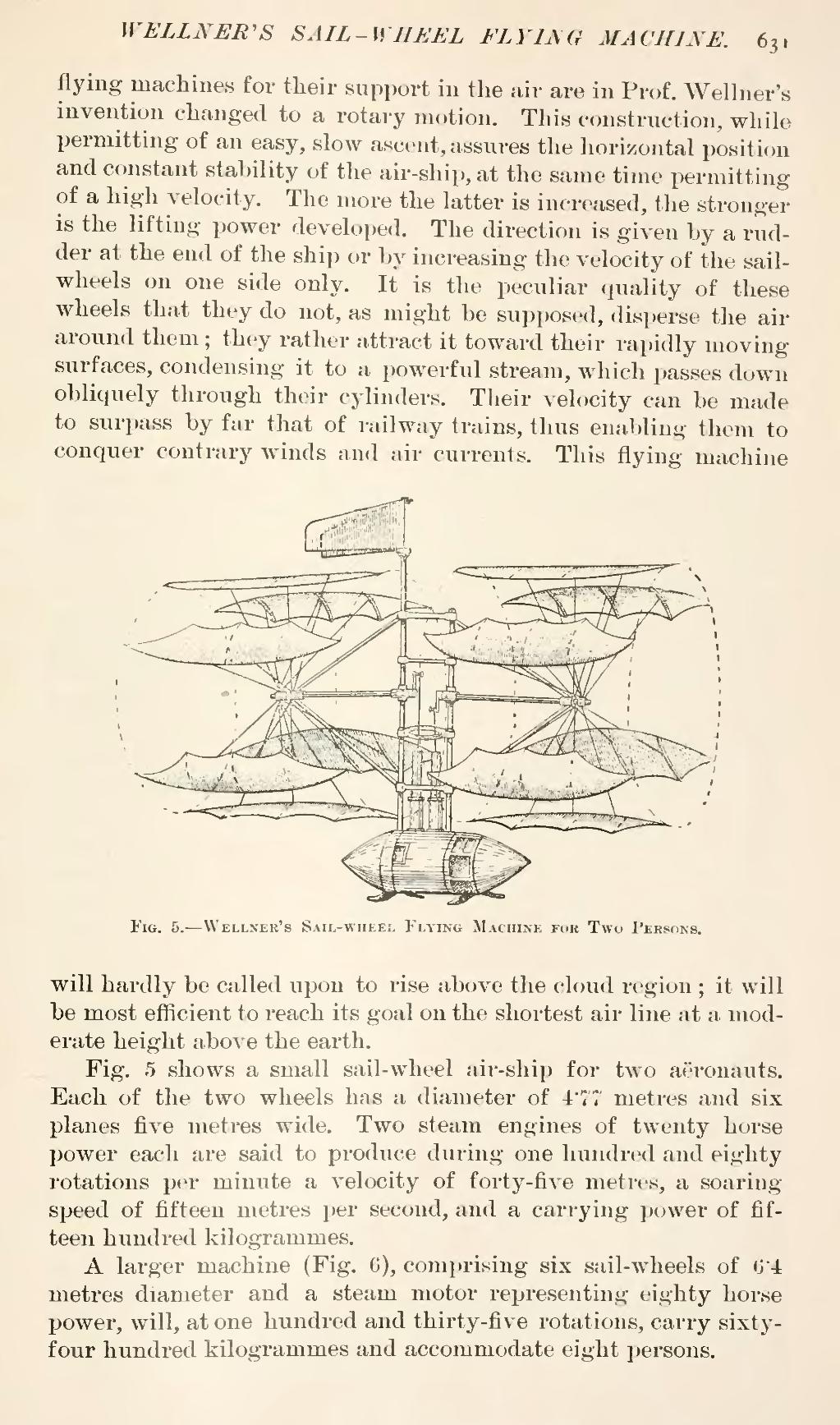flying machines for their support in the air are in Prof. Wellner's invention changed to a rotary motion. This construction, while permitting of an easy, slow ascent, assures the horizontal position and constant stability of the air-ship, at the same time permitting of a high velocity. The more the latter is increased, the stronger is the lifting power developed. The direction is given by a rudder at the end of the ship or by increasing the velocity of the sail-wheels on one side only. It is the peculiar quality of these wheels that they do not, as might be supposed, disperse the air around them; they rather attract it toward their rapidly moving surfaces, condensing it to a powerful stream, which passes down obliquely through their cylinders. Their velocity can be made to surpass by far that of railway trains, thus enabling them to conquer contrary winds and air currents. This flying machine

Fig. 5.—Wellner's Sail-wheel Flying Machine for Two Persons.
will hardly be called upon to rise above the cloud region; it will be most efficient to reach its goal on the shortest air line at a moderate height above the earth.
Fig. 5 shows a small sail-wheel air-ship for two aëronauts. Each of the two wheels has a diameter of 4·77 metres and six planes five metres wide. Two steam engines of twenty horse power each are said to produce during one hundred and eighty rotations per minute a velocity of forty-five metres, a soaring speed of fifteen metres per second, and a carrying power of fifteen hundred kilogrammes.
A larger machine (Fig. 6), comprising six sail-wheels of 6·4 metres diameter and a steam motor representing eighty horse power, will, at one hundred and thirty-five rotations, carry sixty-four hundred kilogrammes and accommodate eight persons.
